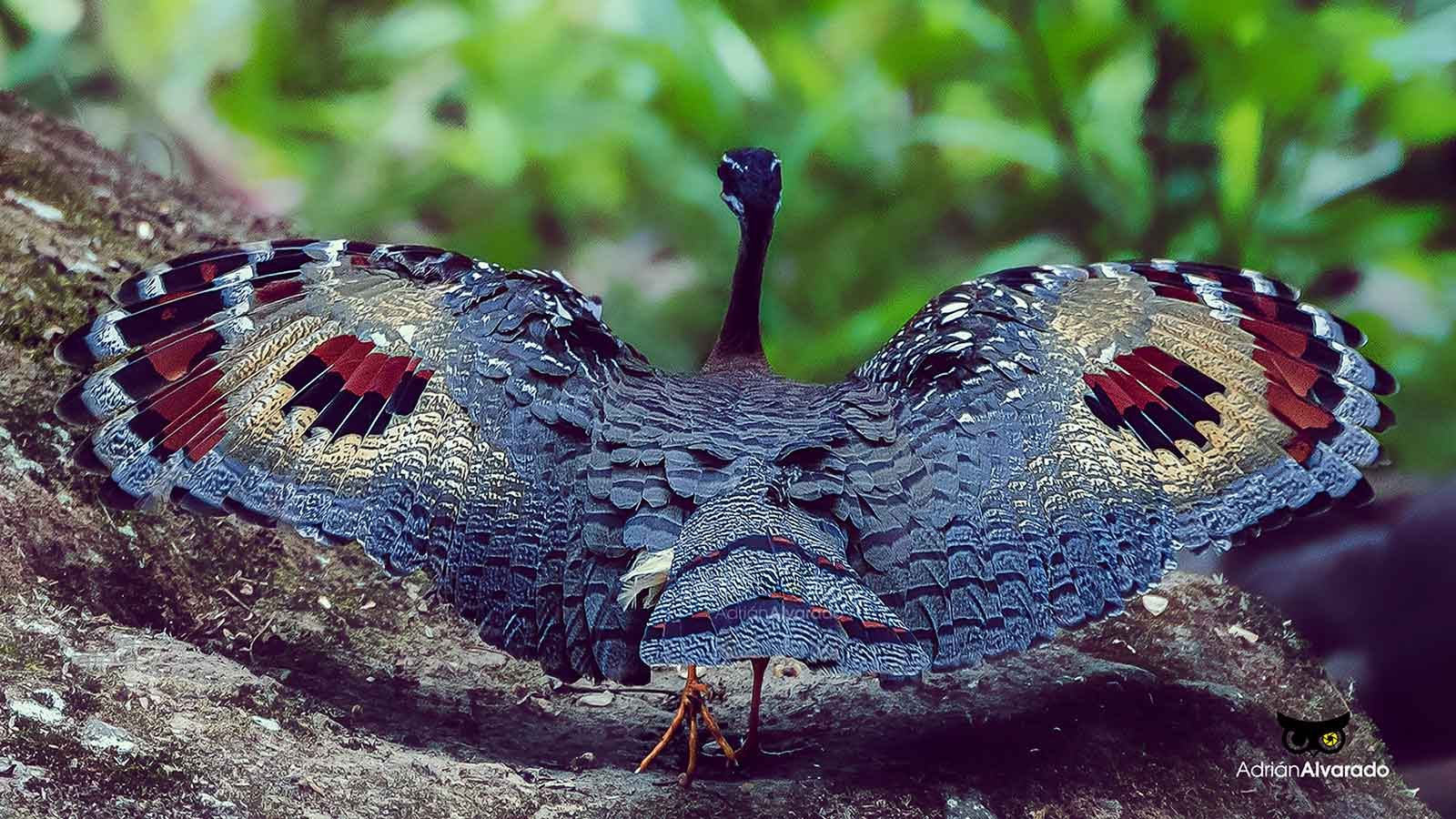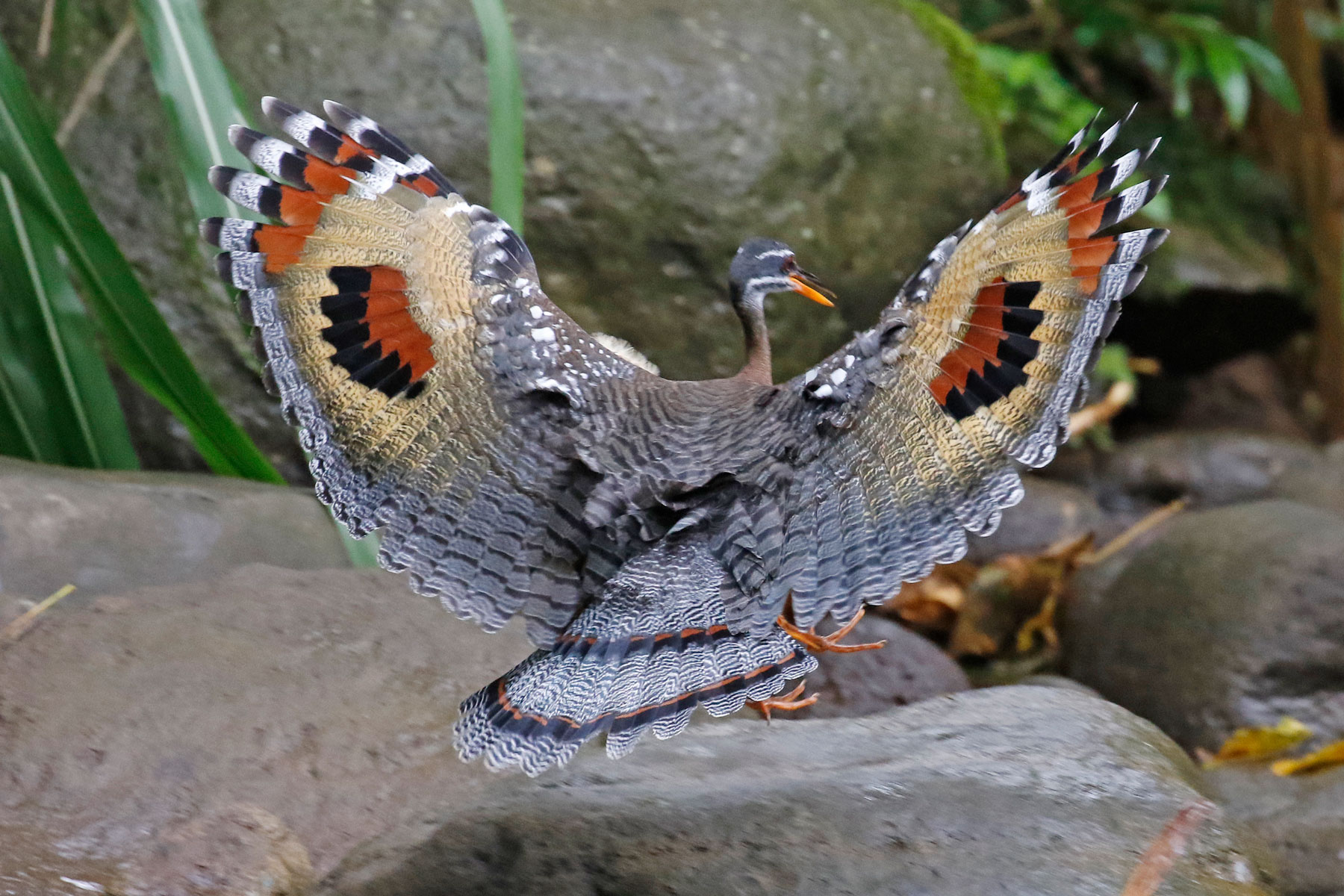Una de las aves más deslumbrantes del mundo; el intrincado patrón amarillo, rojo y negro en las alas extendidas es realmente de otro mundo. Un pájaro con un plumaje tan impresionante y colores tan llamativos que es casi de otro mundo.
CONOCE A LOS BOTONES DEL SOL
The sunbittern (Eurypyga helias) is a bittern-like bird living in the tropical regions of the Americas that shares many physical characteristics with other Bitterns. Their plumage is black, grey, and brown. The flight feathers are vividly colored in the center and when the wings are spread – exhibit a pattern that resembles bright eyespots in red, yellow, and black. The bird has a generally subdued coloration, with fine linear patterns of black, grey, and brown. Its remiges however have vividly colored middle webs, which with wings fully spread show bright eyespots in red, yellow, and black. These are shown to other sunbitterns in courtship and threat displays or used to startle potential predators. The color of the legs and feet ranges from yellowish-orange to reddish. The bill is long and pointed.
Male and female adult sunbitterns can be differentiated by small differences in the feather patterns of the throat and head.
Like some other birds, the sunbittern has powder down.
These birds have a range that stretches from southern Mexico through Guatemala to southern Peru and Brazil in South America. They are resident (non-migratory) birds.
Sunbitterns like to live in humid Neotropical forests with an open understory as well as near rivers and streams.
Sunbitterns consume a wide range of animal prey. Insects form an important part of the diet, with cockroaches, dragonfly larvae, flies, katydids, water beetles, and moths being taken. Other invertebrate prey includes crabs, spiders, shrimps, and earthworms. They will also take vertebrate prey including fish, tadpoles, toads and frogs, eels, and lizards.

Los pájaros del sol comienzan a anidar al comienzo de la temporada de lluvias y antes de que comience, realizan exhibiciones de vuelo de 10 a 15 m (33 a 49 pies) de altura en el dosel del bosque. construyen nidos abiertos en los árboles y ponen dos huevos con manchas. los jóvenes son precoces pero permanecen en el nido durante varias semanas después de la eclosión.

Los pájaros del sol también son una de las 12 especies de aves en cinco familias que se han descrito como pescadores usando cebos o señuelos para atraer presas a una distancia sorprendente. este tipo de comportamiento cae dentro de la definición común de uso de herramientas. En los pájaros del sol, este comportamiento solo se ha observado hasta ahora en aves cautivas.
esta ave se considera de menor preocupación en la lista roja de la UICN.
MIRA ESTE PÁJARO AQUÍ EN EL VIDEO A CONTINUACIÓN: